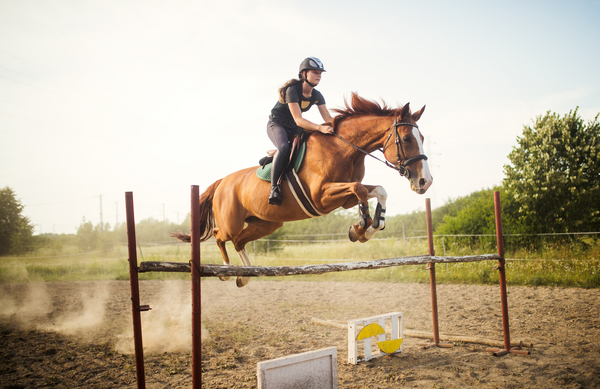An equestrian sport called eventing takes pride of place in the difficult trials of a sports couple. It includes three different disciplines: submission, endurance, ability to overcome difficulties on rough locality. The rapidity of recovery of the animal after the cross is also taken into account.
Competitions have their roots far back in time, when jumpers were chosen for qualities for the cavalry of England. Officially, in the Olympic Games, the discipline of jockey triathlon started in 1912.
Stages and time of the competition
Competitions in this discipline are held for three days.
On the first day, the organizers hold a festive opening, introduction of participants and demonstration breaking.
On the second day, a grueling off-road race with a diverse landscape with natural and artificial obstacles awaits the sports couple.
On the final day of the competition, participants are tested on the show jumping field, the horse’s ability to recover after a hard cross is assessed.
Now let’s analyze each of them in more detail.

Dressage riding is carried out absolutely according to all the rules of dressage competitions, but a little simplified. In this type, judges give points for obedience, correct execution of commands, clarity of movements and figures. It is important for the equestrian and the jumper to be collected and calm.
The second day is the hardest and most exhausting. Half of the participants do not reach the finish line that day. The length of the route varies from 1.5 to 3 km.
The route is divided into 4 sections with different types of tests.
- The first section is intended for warming up and includes roads and trails with different terrain. But there are time limits that must be invested in.
- The second stage checks the coherence of the equestr and the stallion. All sorts of obstacles with ditches, water barriers, hedgerows and more are presented. The passage of this segment is also limited in time, which is closely monitored by the judges.
- The third section is similar to the first stage, but is used for recreation. Helps the horse to recover from a difficult distance.
- The final stage, in which most of the horses refuse to take part and throw off the jockeys. Before the final stretch, called the “real cross”, the horses are examined and allowed to rest for 10 minutes.
The third day ends the show jumping competition. The rules are identical to the classic show jumping, which involves overcoming difficult in the arena. The winner is determined by the total amount of forfeit points based on the results of three days.
Horse munitions and jockey equipment
Equestrian sports participants require special equipment for the animal and jockey, without which no preparation takes place.
The munition of a horse consists of:
- a bridle (a part of the munition that is put on the animal’s head and facilitates its management);
- mouthpiece (iron bit with a rise and a strut near the palate of the horse, without which the control is impossible);
- hackamora (leather straps passing around the horse’s muzzle);
- seat;
- boots (a device for protecting the limbs of a horse);
- voltrap (lining under the seat protects the back from damage to the horse);
- blanket (blanket for a horse);
- girth (detail of holding the seat);
- chambur (compulsory attribute, without which entry to the meeting is not possible).
Let’s move on to the mandatory equipment of a jockey:
- Amazon;
- breeches;
- redington;
- jockey;
- leggings (linings for protection of a shin);
- spurs;
- helmet, cylinder;
- tailcoat, gloves, whip, protective vest.
Some equipment serves as an attribute to maintain traditions in sports.
Failure to do so will result in disqualification from the competition. For non-compliance with the generally accepted colors of the uniform, the judges have the right to award penalty points. For the entire duration of the tournament, only one sports pair participates, the replacement of a horse is prohibited.
Veterinarians and the medical service are required to remove the animal from the race if they discover health problems.
The traditional three-day tournament can be changed to one or two days. In a one-day tournament, the sequence of stages changes: breaking, show jumping, cross-country. In the two-day: arena riding, racing, light version of cross-country.